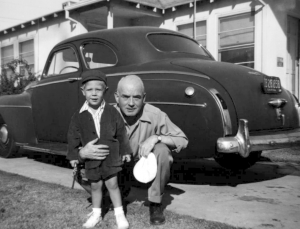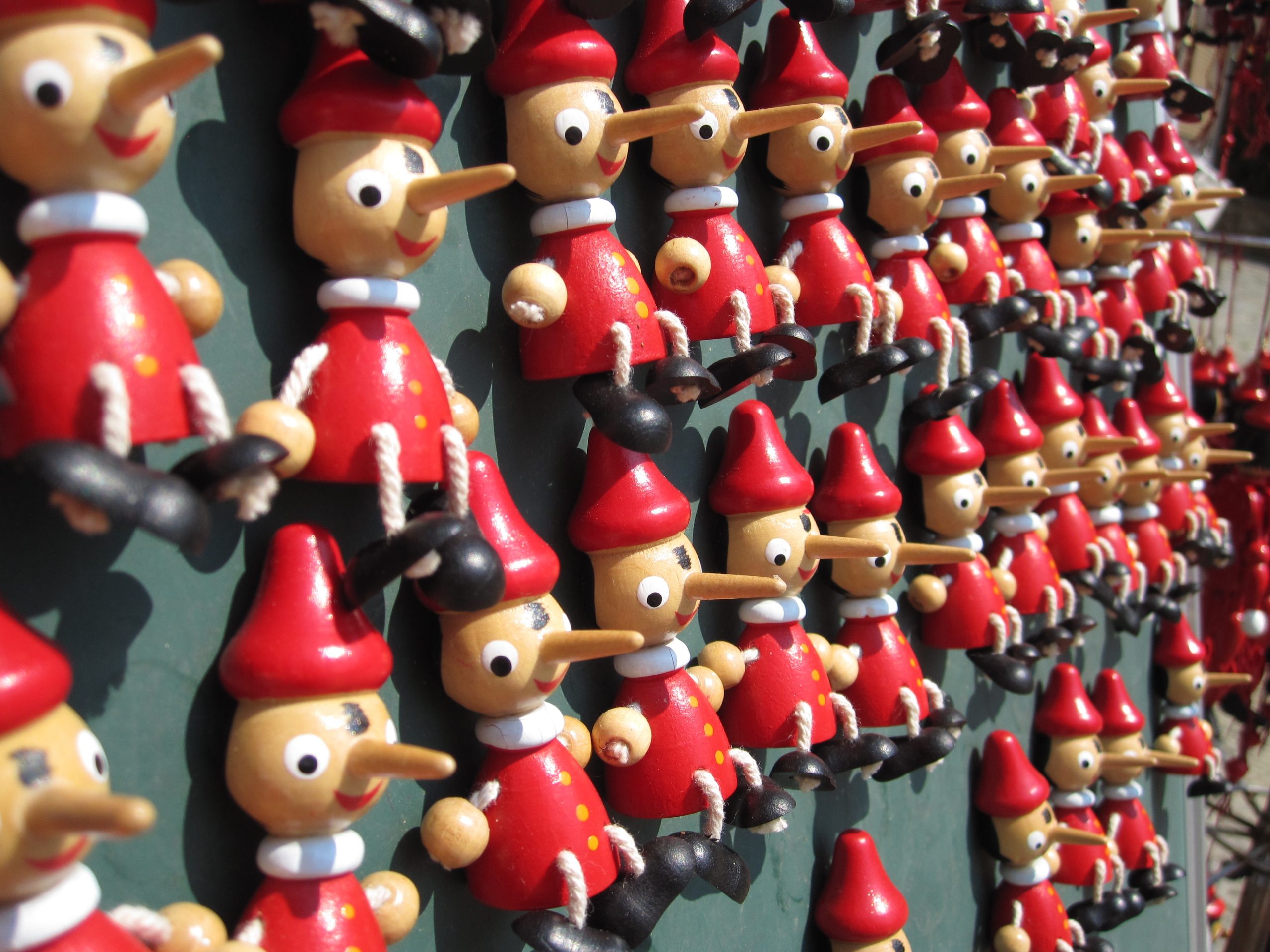5.2. Why Socialization Matters
Socialization is critical both to individuals and to the societies in which they live. It illustrates how completely intertwined human beings and their social worlds are. First, it is through teaching culture to new members that a society perpetuates itself. If new generations of a society do not learn its way of life, it ceases to exist. Whatever is distinctive about a culture must be transmitted to those who join it, in order for a society to survive. For Canadian culture to continue, for example, children in Canada must learn about cultural values related to democracy: They have to learn the norms of voting, as well as how to use material objects such as a ballot. Of course, some would argue that it is just as important in Canadian culture for the younger generation to learn the etiquette of eating in a restaurant or the rituals of tailgate parties after baseball games. In fact, there are many ideas and objects that Canadians teach children in hopes of keeping the society’s way of life going through another generation.

Socialization is just as essential to individuals. Social interaction provides the means by which people gradually become able to see themselves through the eyes of others, learning who they are and how they fit into the world around them. In addition, to function successfully in society, people must learn the basics of their culture, everything from how to dress themselves to what is suitable attire for a specific occasion; from when to sleep to what to sleep on; and from what is considered appropriate to eat for dinner to how to use the stove to prepare it. Most importantly, people have to learn language — whether it is the dominant language or a minority language, whether it is verbal or through signs — in order to communicate and to think. As discussed earlier with the case of Danielle, without socialization, an individual would literally have no self. An individual would be unable to function socially.
Nature versus Nurture
Some experts assert that who people are is the result of nurture — the relationships and caring that surround them. Others argue that who people are is based on genetics. According to this belief, a person’s temperaments, interests, and talents are set before birth. From this perspective, then, who people are depends on nature.

One way researchers attempt to prove the impact of nature is by studying twins. Some studies followed identical twins (i.e., monozygotic twins) who were raised separately. The pairs shared the same genetics, but in some cases were socialized in different ways. Instances of this type of situation are rare, but studying the degree to which identical twins raised apart are the same or different can give researchers insight into how temperaments, preferences, and abilities are shaped by our genetic makeup versus our social environment.
For example, in 1968, twin girls born to a mentally ill mother were put up for adoption. However, they were also separated from each other and raised in different households. The parents, and certainly the babies, did not realize they were one of five pairs of twins who were made subjects of a scientific study (Flam, 2007). In 2003, the two women, by then age 35 years, were reunited. Elyse Schein and Paula Bernstein sat together in awe, feeling like they were looking into a mirror. Not only did they look alike, but they behaved alike, using the same hand gestures and facial expressions (Spratling, 2007).
Studies like this point to the genetic roots of temperament and behaviour. The Minnesota Study of Twins Raised Apart (MISTRA) included 81 identical (or monozygotic) twin pairs and 56 fraternal (or dizygotic) twin pairs who were raised apart (Segal, 2017). One study based on this data set compared twins using 11 personality scales. It showed that the median correlations of the test results were 0.49 for identical twins raised apart versus 0.51 for identical twins raised together, whereas the correlations for fraternal twins raised apart and together were 0.21 and 0.23 respectively. This seems to show the strong impact of shared genes, as the identical twins raised apart were much more similar than fraternal twins raised together. Another study based on the data set compared IQ tests of identical twins raised apart and discovered that the measures correlated on average 0.73, suggesting that 73% of the difference in general intelligence measured by the tests was genetically influenced.
On the other hand, parents of identical twins start noticing behavioural differences from a very young age.
It is not as hard to tell my sons apart now, but we often recognize them more based on personality differences than looks. One is adventurous, daring — the first to nosedive off a sofa, the first to fall down stairs. He also crawled, stood, cruised, and walked first. He hollers and cries when we leave the room. Our other boy is an observer. He can be laser-focused, able to spend 30 minutes trying to click together a buckle as his brother marches around with his chest puffed, in need of constant movement and entertainment (Hayasaki, 2018).
Studies of identical twins also have difficulty accounting for divergences in the development of inherited diseases. In the case of schizophrenia, epidemiological studies show that there is a strong biological component to the disease. The closer one’s familial connection to someone with the condition, the more likely one will develop it. However, even if an identical twin develops schizophrenia the other twin is less than 50 per cent likely to develop it themselves (Carey, 2012). Why is it not 100 per cent likely? What occurs to produce the divergence between genetically identical twins?
One explanation combines sociology and genetics. This is the field of epigenetics, the study of social or environmental impacts on the expression of genes (Segal et al., 2017). Cellular variations in gene expression between identical twins can lead to large differences in health, personality, and even physical appearance. For example, the impact of astronaut Scott Kelly’s stay on the International Space Station meant that 7 per cent of his genes changed their expression, even months after his return to earth, although his genes themselves remained the same as his identical twin Mark (also an astronaut). With epigenetics, gene activity reacts in response to environmental stimuli at a cellular level. In other words, environment and lifestyle influence how genes are expressed.
Though genetics and hormones play an important role in individual human characteristics, biological explanations of social behaviour have serious deficiencies from a sociological point of view, especially when they are used to try to explain complex aspects of human social life like homosexuality, male aggressiveness, female spatial skills, and the like. As noted in Chapter 3. Culture, the logic of biological explanation usually involves three components: the identification of a supposedly universal quality or trait of human behaviour, an attribution of a genetic source of the behavioural trait, and an evolutionary fitness argument why this behaviour makes it more likely that the genes that code for it will be passed successfully to descendents. The conclusion of this reasoning is that this behaviour or quality is hard-wired or difficult to change (Lewontin, 1991).
However, an argument, for example that males are naturally aggressive because of their hormonal structure or other biological mechanisms, does not take into account the huge variations in the meaning or practice of aggression between cultures, nor the huge variations in what counts as aggressive in different situations — let alone the fact that many men are not aggressive by any definition, and that men and women both have “male” hormones like testosterone. More interesting for the sociologist in this example is that men who are not aggressive often get called “sissies.” This indicates that male aggression has to do more with a normative structure within male culture than with a genetic or hormonal structure that explains aggressive behaviour.
Sociology’s larger concern is the effect that society has on human behaviour, the nurture side of the nature versus nurture debate. To what degree are processes of identification and “self-fulfilling prophecy” at work in the lives of the twins Elyse Schein and Paula Bernstein? Despite growing up apart, do they share common racial, class, or religious characteristics? Aside from the environmental or epigenetic factors that lead to the divergence of twins with regard to schizophrenia, what happens to the social standing and social relationships of a person when the condition develops? What happens to people who are living with schizophrenia in different societies? How does the social role of a person living with schizophrenia integrate them into a society (or not)? Whatever the role of genes or biology in people’s lives, genes are never expressed in a vacuum. Environmental influence always matters.
Making Connections: Case Study
The Life of Chris Langan, the Smartest Man You’ve Never Heard Of

Bouncer. Firefighter. Factory worker. Cowboy. Chris Langan (b. 1952) has spent the majority of his adult life just getting by with jobs like these. He has no college degree, few resources, and a past filled with much disappointment. Chris Langan also has an IQ of over 195, nearly 100 points higher than the average person (Brabham, 2001). So why didn’t Chris become a neurosurgeon, professor, or aeronautical engineer? According to Macolm Gladwell in his book Outliers: The Story of Success (2008), Chris didn’t possess the set of social skills necessary to succeed on such a high level — skills that aren’t innate, but learned.
Gladwell (2008) looked to a recent study conducted by sociologist Annette Lareau in which she closely shadowed 12 families from various economic backgrounds and examined their parenting techniques. Parents from lower-income families followed a strategy of “accomplishment of natural growth,” which is to say they let their children develop on their own with a large amount of independence; parents from higher-income families, however, “actively fostered and accessed a child’s talents, opinions, and skills” (Gladwell, 2008). These parents were more likely to engage in analytical conversation, encourage active questioning of the establishment, and foster development of negotiation skills. The parents were also able to introduce their children to a wider range of activities, from sports to music to accelerated academic programs. When one middle class child was denied entry to a gifted and talented program, the mother petitioned the school and arranged additional testing until her daughter was admitted. Lower-income parents, however, were more likely to unquestioningly obey authorities such as school boards. Their children were not being socialized to comfortably confront the system and speak up.
What does this have to do with Chris Langan, deemed by some as the smartest man in the world (Brabham, 2001)? Chris was born in severe poverty, and he was moved across the country with an abusive and alcoholic stepfather. Chris’s genius went greatly unnoticed. After accepting a full scholarship to Reed College, his funding was revoked after his mother failed to fill out necessary paperwork. Unable to successfully make his case to the administration, Chris, who had received straight A’s the previous semester, was given F’s on his transcript and forced to drop out. After enrolling in Montana State University, an administrator’s refusal to rearrange his class schedule left him unable to find the means necessary to travel the 16 miles to attend classes. What Chris has in brilliance, he lacks in practical intelligence, or what psychologist Robert Sternberg defines as “knowing what to say to whom, knowing when to say it, and knowing how to say it for maximum effect” (Sternberg et al., 2000). Such knowledge was never part of his socialization.
Chris gave up on school and began working an array of blue-collar jobs, pursuing his intellectual interests on the side. Though he’s recently garnered attention from work on his “Cognitive Theoretic Model of the Universe,” he remains weary and resistant of the educational system.
As Gladwell (2008) concluded, “He’d had to make his way alone, and no one — not rock stars, not professional athletes, not software billionaires, and not even geniuses —ever makes it alone.”
Individual and Society
How do sociologists explain both the conformity of behaviour in society and the existence of individual uniqueness? The concept of socialization raises a classic problem of sociological analysis: the problem of individual agency. As described in Chapter 1. An Introduction to Sociology, individual agency is the capacity of individuals to act and make decisions independently. However socialization is about conformity: learning how to conform to social expectations and norms. How is it possible for there to be individual differences, individual choice, or individuality at all if human development is about assuming socially-defined roles? How can an individual have agency, the ability to choose and act independently of external constraints?
Erving Goffman described this paradox in Asylums: Essays on the social situation of mental patients and other inmates (1961). As discussed at the end of this chapter, in a total institution, like an asylum, a prison, or an Indian residential school, individuals are typically stripped of anything that identifies them as individuals and then resocialized to conform to rigid expectations of appearance and behaviour. There is very little space provided for unique individuality. Yet, as Goffman (1961) puts it, there is a dynamic that pits the status, the need to belong, and stable “sense of being a person” against a more intimate, individual “sense of selfhood”:
it is . . . against something that the self can emerge . . . . Without something to belong to, we have no stable self, and yet total commitment and attachment to any social unit implies a kind of selflessness. Our sense of being a person can come from being drawn into a wider social unit; our sense of selfhood can arise through the little ways in which we resist the pull. Our status is backed by the solid buildings of the world, while our sense of personal identity often resides in the cracks (Goffman, 1961).
Since Western society places such value on individuality, in being oneself or in resisting peer pressure and other pressures to conform, the question of where society ends and where the individual begins often is foremost in the minds of students of sociology. Numerous debates in the discipline focus on this question.
However, from the point of view emphasized in this chapter, it is a false question. As noted previously, for Mead the individual “agent” is already a “social structure.” No separation exists between the individual and society; the individual is thoroughly social from the inside out and vice versa.

Mead addressed the question of agency at the level of the relationship between the “I” and the “me” as two “phases” that flip back and forth in the life of the self. The “me” is the part of the self in which one recognizes and assumes the expectations or “organized sets of attitudes” of others: one’s social roles, one’s designations, one’s personalities (as they appear to others), and so on. On the basis of the “me” people know what is expected of them in a social situation and what the consequences of following or breaking a norm will be. The “I” represents the part of the self which acts or responds to the organized attitudes of others. It is the unpredictable part of the self. It has the capacity to step outside of social role and expectations. As part of the self, it embodies the principles of novelty, spontaneity, freedom, initiative (and the possibility of change) in social action. Even the individual can never be sure in advance how they will act in a situation, nor be certain of the outcome of their actions. “Exactly how we will act never gets into experience until after the action takes place” (Mead, 1934). Both phases are thoroughly social — the individual only ever experiences themself “indirectly” from the standpoint of others — but without the two phases “there could be no conscious responsibility, and there would be nothing novel in experience” (Mead, 1934).
In a similar manner, sociologists argue that individuals vary because the social environments to which they adapt vary. The socialization process occurs in different social environments — i.e., environments made up of the responses of others — each of which impose distinctive and unique requirements. In one family, children are permitted unlimited access to TV and video games; in another, there are no TV or video games, for example. Even within the same family, children’s upbringing varies. When they are growing up, children adapt and develop different strategies of play and recreation. Their parents and others respond to the child’s choices, either by reinforcing them or encouraging different choices. They are older, younger, or middle siblings with different responsibilities and roles within the family. Along a whole range of social environmental differences and responses, support and resistance, children gradually develop stable and consistent orientations to the world, each to some degree unique because each is formed from a vantage point unique to the place in society the child occupies. Individual variation and individual agency are possible because society itself varies in each social situation. Indeed, the configuration of society itself differs according to each individual’s contribution to each social situation.
Structural Functionalism, Critical Sociology, and Symbolic Interactionism
Sociologists all recognize the importance of socialization for healthy individual and societal development. But how do scholars working in the theoretical paradigms of structural functionalism, critical sociology, and symbolic interactionism approach this topic?
Structural functionalists would say that socialization is an essential function in society, both because it trains members to operate successfully within it and because it perpetuates culture by transmitting it to new generations. Individuals learn and assume different social roles as they age because different responsibilities and tasks are expected of them. These roles come with relatively fixed norms and social expectations attached, which allow for predictable interactions between people. Nevertheless, how the individual lives and balances their roles is subject to variation. There can also be role conflict when the expectations or functions of different roles conflict. During the COVID-19 pandemic for example, working remotely from home often involved a careful negotiation between meeting an employer’s expectations while also being available as a parent for children unable to go to school.
A critical sociologist might argue that socialization reproduces inequality from generation to generation by conveying different expectations and norms to those with different social characteristics. For example, individuals are socialized with different expectations about their place in society according to their gender, social class, and race. As in the life of Chris Langan, this creates different and unequal opportunities and, therefore, socialization is a process that can perpetuate and naturalize power relationships in society.
A symbolic interactionist studying socialization is concerned with face-to-face exchanges and symbolic communication. For example, dressing baby boys in blue and baby girls in pink is one small way that messages are conveyed about differences in gender roles. The idea that “the self is a social structure” encapsulates the symbolic interactionist position. Even that which seems most “one’s own” — one’s private thoughts, self-feelings, bodily experiences, agency — is a product of social messages that continually mirror the self back to the self. For the symbolic interactionist, though, how these messages are formulated and how they are interpreted are always situational, always renewed, and defined by the specific interactions in which the communication occurs. The identity of the self is not fixed, it is an ongoing process.
Media Attributions
- Figure 5.12 FullCircle by Niyam Bhushan, via Flickr, is used under a CC BY 2.0 licence.
- Figure 5.13 John Everett Millais (1829-1896) – The Twins, Kate and Grace Hoare – PD.36-2005 – Fitzwilliam Museum, by John Everetty Millais/ Fizwilliam Museum, ID 125024, via Wikimedia Commons, is in the public domain.
- Figure 5.14 Christopher Langan Young, from Darien Long, via Wikimedia Commons, is used under a CC BY 2.0 licence.
- Figure 5.15 [figures, holzfigur, pinocchio, males, arts crafts, wood carving…] from PxHere is used under a CC0 Universal Public Domain Dedication licence.

